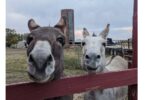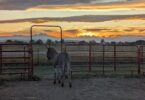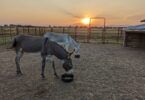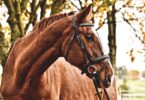Make Feed Time Simpler
Horse nose bag feeders may seem a bit old-fashioned, but they can be a convenient method to feed your horse grain or supplements.
Horse feed bags, also called nose bags, were once commonplace on farms and in the military. They are designed to fit over a horse’s muzzle. Nose bags make sure each horse gets his (and only his) grain at feed time.
Regardless of their value, however, horse bags should be removed immediately after eating as they’re not designed for prolonged wear (like grazing muzzles).
Best Nose Bag Feeders for Horses
Horse feed bags, also called nose bags, fit over a horse’s muzzle so they can eat grain from within the bag. Here are our top options.
| Nose Bag Feeder | Key Features | Price Point |
| Cashel Company Feed Rite Bag | Retractable elastic strap | $$$ |
| Majestic Ally Horse Feed Bag | Padded neck strap | $ |
| Derby Originals Ripstop Feed Bag | Leather ventilation patch | $$ |
Cashel Company Feed Rite Bag
This feed bag, which comes in four colors, can help reduce fighting at feed time.
Pros
- Breathable mesh
- Name tag
- The elastic strap retracts as grain is eaten to eliminate waste
Cons
- More difficult to clean
Majestic Ally Horse Feed Bag
This feed bag comes in four sizes (pony, cob, full, and draft) to fit every horse in your pasture.
Pros
- Nose and neck padding for maximum comfort
- Easy-to-adjust straps
- Slow-feed design
Cons
- Fit can be a challenge
- Stitching can come loose
Derby Originals Ripstop Feed Bag
This bag offers a host of great features, making it a top choice.
Pros
- No-spill design (interior flap)
- Nose and neck padding
- Easy to use roller buckle
- Reinforced nylon base
Cons
- The elastic on the strap may come loose
Bonus: Best Feed Pan
Little Giant Farm 3 Gallon Rubber Feed Pan
If a nose bag isn’t your thing, here’s a great feed pan.
Pros
- Easy to clean
- Safe to use with horses that paw
- Multi-use (can use as a cat litter box, to feed dogs, or as a water bowl for farm animals, etc.)
Cons
- Easy for horses to turn over
Nose Bag Feeder History
Long before stalls were common, most horses lived in fields. Horse owners would feed grain using a nose bag to save the trouble of having to separate all the horses at feed time.
They were also convenient for traveling, camping, and cavalry horses.
Nose Bag Feeder Function
A nose bag feeder means you can feed all the horses in a field without having to separate them. Everybody gets the amount of grain they should. For messy eaters, a nose bag also can minimize cleanup.
Feed Bag Materials & Construction
The most common materials are canvas, mesh, and nylon. A leather strap with a buckle is attached to the bag. This strap sits behind your horse’s ears, not unlike a bridle.
Nose Bag Feeder vs. Feed Pan
If you already separate your horses at feed time, then a feed pan works just as well. A feed pan is placed on the ground and not attached to the horse, so you don’t have to supervise them while eating.
Some horses, however, will overturn the pan and make a mess.
Frequently Asked Questions
Q: Is a nose bag feeder the same thing as a grazing muzzle?
No. A nose bag feeder is designed to feed grain or supplements. A grazing muzzle limits how much grass a horse can eat.
Q: What is the difference between a feed bag and a nose bag?
Feed bag and nose bag are synonyms—they are used interchangeably to describe the same thing.
Q: Can a horse suffocate with a nose bag?
Most nosebags have holes in them so your horse can breathe.
There is a risk of drowning, however, if your horse tries to drink with the nose bag on, so be sure to remove it promptly after he’s done eating.
Q: What is the difference between a nose bag and a hay bag?
A nose bag fits on a horse’s muzzle with a strap behind the ears and is used to feed grain. A hay bag, which can either be a bag with holes or a net, is used to feed hay.
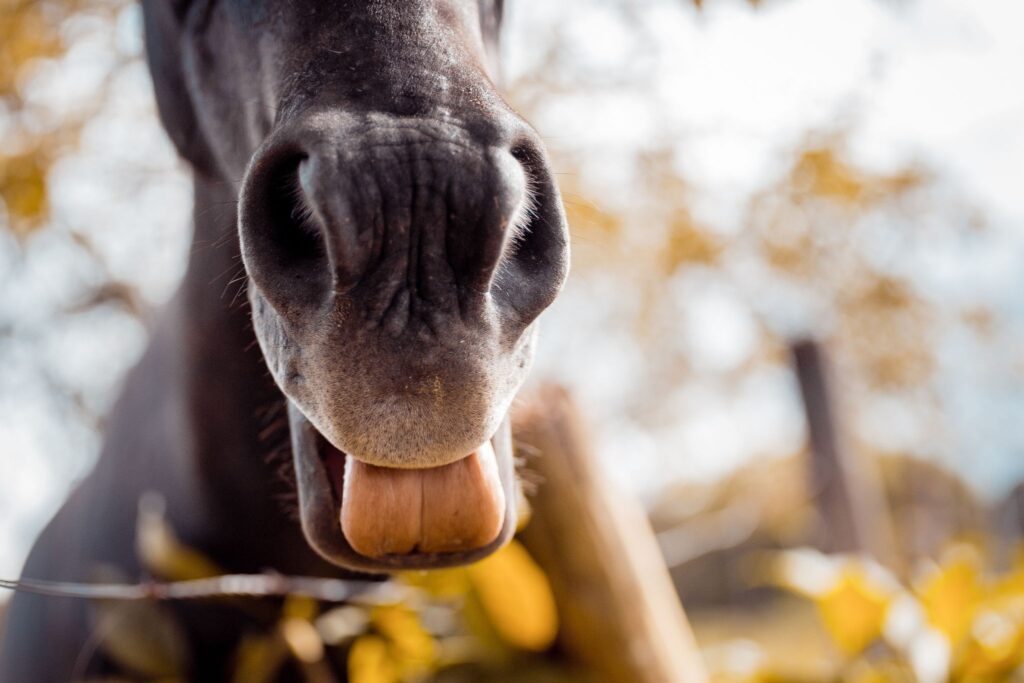
Source: Canva
Parting Thoughts
If you’re looking to save time when it comes to feeding, a nose bag feeder may be the solution you didn’t know you were looking for.
P.S. Enjoy this article? Trot on over to:
- Three Types of Horse Feed Every Owner Should Understand
- Tips & Tricks: How to Help Senior Horses Gain Weight
- Foundering in Horses: Figure Out Your Fix
- Donkey vs. Horse Nutrition: What’s the Difference?
- Draft Horse Diet: How Much do they Really Eat?
- Best Feed for an OTTB: An Art and a Science
- Mares and Foals: How to Feed Breeding Stock for Success
- How to Soak Hay for Horses (and Why Bother)
- 3 Easy (& Nicker-worthy) Homemade Horse Treats








